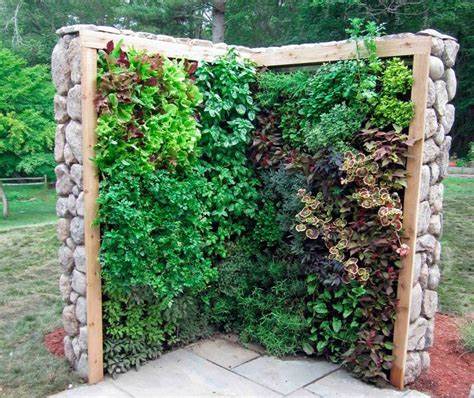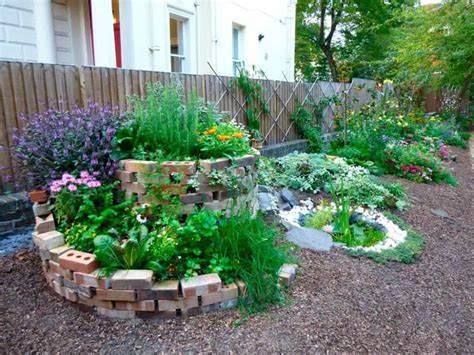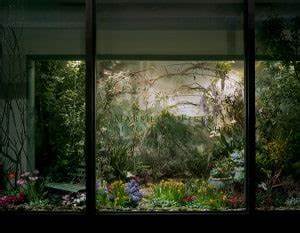
Introduction
The concept of vertical gardening and permaculture has gained significant attention in recent years, as individuals and communities seek sustainable solutions to food production and environmental conservation. This article explores the principles, benefits, challenges, and future implications of vertical gardening and permaculture.
Historical Background
Vertical gardening has its roots in ancient civilizations such as the Babylonians and Romans, who utilized trellises and hanging gardens to maximize limited space. On the other hand, permaculture originated in the 1970s as a response to the environmental degradation caused by conventional agriculture. It was developed by Bill Mollison and David Holmgren as a holistic approach to designing sustainable systems.
Key Concepts and Definitions
Vertical gardening involves growing plants upwards using structures like trellises, walls, and containers. Its principles include utilizing limited space efficiently and increasing accessibility for individuals with physical limitations. On the other hand, permaculture is a design system that aims to create productive and self-sustaining ecosystems. Its core principles involve designing with nature, maximizing diversity and resilience, and regenerating natural ecosystems.
Benefits of Vertical Gardening and Principles of Permaculture
Point: Benefits of Vertical Gardening
Utilization of limited space: Vertical gardening allows individuals in urban areas or with limited land to grow their own food.
Increased accessibility for people with physical limitations: Vertical gardens can be designed at various heights, making them accessible for individuals with mobility challenges.
Enhanced plant growth and productivity: Vertical gardening optimizes sunlight exposure and air circulation, leading to improved plant growth and higher yields.
Reduction in pests and diseases: Elevating plants off the ground can help minimize pest and disease issues.

Point: Principles of Permaculture
Designing with nature: Permaculture emphasizes observing natural patterns and incorporating them into design, creating sustainable and harmonious systems.
Maximizing diversity and resilience: By cultivating a wide range of plants and animals, permaculture systems are more resilient to pests, diseases, and environmental changes.
Regenerating natural ecosystems: Permaculture aims to restore degraded lands and ecosystems, promoting biodiversity and ecological balance.
Point: Integration of Vertical Gardening and Permaculture
Vertical gardening can be incorporated into permaculture systems by utilizing vertical structures to grow a variety of plants, creating diverse and productive gardens.
Examples of successful integration include incorporating vertical planters into permaculture farms or designing vertical gardens within permaculture-designed urban spaces.
Case Studies or Examples
Case study: Vertical gardening in urban settings
Successful examples of vertical gardens in cities include the Bosco Verticale in Milan, Italy, and the Gardens by the Bay in Singapore, which showcase vertical greenery in high-rise buildings.
Urban vertical gardening faces challenges such as limited space, structural considerations, and proper irrigation and watering techniques.

Case study: Permaculture farms incorporating vertical gardening
Permaculture farms like Polyface Farm in Virginia, USA, have successfully implemented vertical gardening techniques such as trellising crops, utilizing vertical hydroponics systems, and incorporating living walls into their designs.
Vertical gardening enhances permaculture practices by maximizing space utilization, increasing biodiversity, and improving overall productivity.
Current Trends or Developments
Recent trends in vertical gardening
Advancements in vertical gardening systems and technologies, such as modular vertical planters and aeroponics, have made it easier for individuals to grow their own food vertically.
Vertical gardening has gained popularity in urban areas due to limited land availability and the desire for locally sourced, fresh produce.
Recent developments in permaculture practices
Innovations in permaculture design and implementation include the use of agroforestry techniques, integrating permaculture with regenerative agriculture systems, and incorporating technology for efficient water management and monitoring.
The integration of technology, such as permaculture-based smartphone applications and digital mapping tools, has enhanced the accessibility and effectiveness of permaculture practices.
Challenges or Controversies
Challenges of vertical gardening
Limited space and sunlight availability in urban areas can pose challenges for successful vertical gardening.
Structural integrity of support structures and proper irrigation systems are crucial factors to consider in vertical gardening.
Adequate watering and irrigation techniques can be challenging to maintain in vertical gardens.

Controversies surrounding permaculture
Permaculture has faced criticism for being impractical or idealistic in terms of its application on large-scale conventional farms.
Debates exist regarding the inclusion of certain practices or techniques within the permaculture framework, such as the use of animals in food production.
Future Outlook
Potential future implications of vertical gardening and permaculture
Increased adoption of vertical gardening in urban areas as a solution for limited space and food security.
Integration of permaculture principles into mainstream agriculture to promote sustainable and regenerative practices.
Emerging technologies and innovations in vertical gardening and permaculture, such as vertical hydroponics systems, smart irrigation systems, and the utilization of artificial intelligence for design optimization.
Conclusion
In conclusion, vertical gardening and permaculture offer promising solutions to the challenges of limited space, environmental degradation, and food security. By understanding the principles, benefits, and challenges associated with these practices, individuals and communities can contribute to a more sustainable and resilient future.
References
For further reading or research on the topic, we suggest the following sources:
“The Vertical Garden: From Nature to the City” by Patrick Blanc
“Introduction to Permaculture” by Bill Mollison
“Gaia’s Garden: A Guide to Home-Scale Permaculture” by Toby Hemenway
“Vertical Gardening: Grow Up, Not Out, for More Vegetables and Flowers in Much Less Space” by Derek Fell




